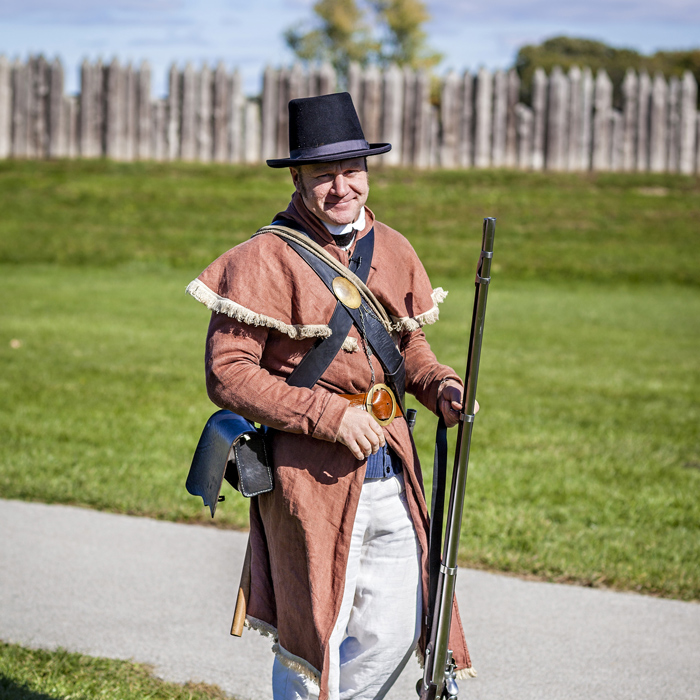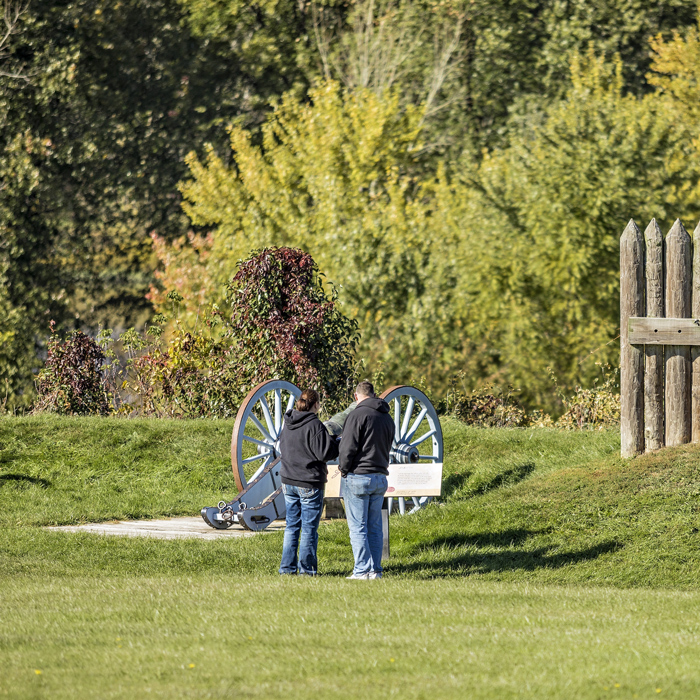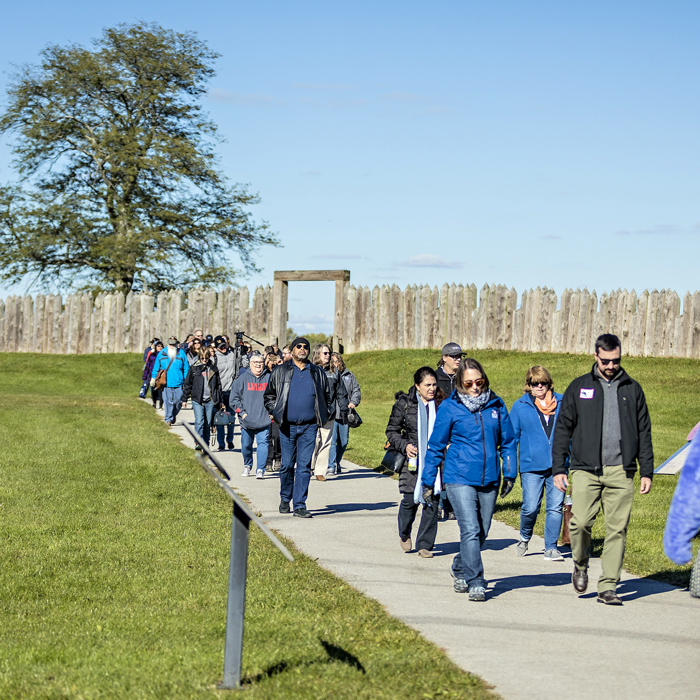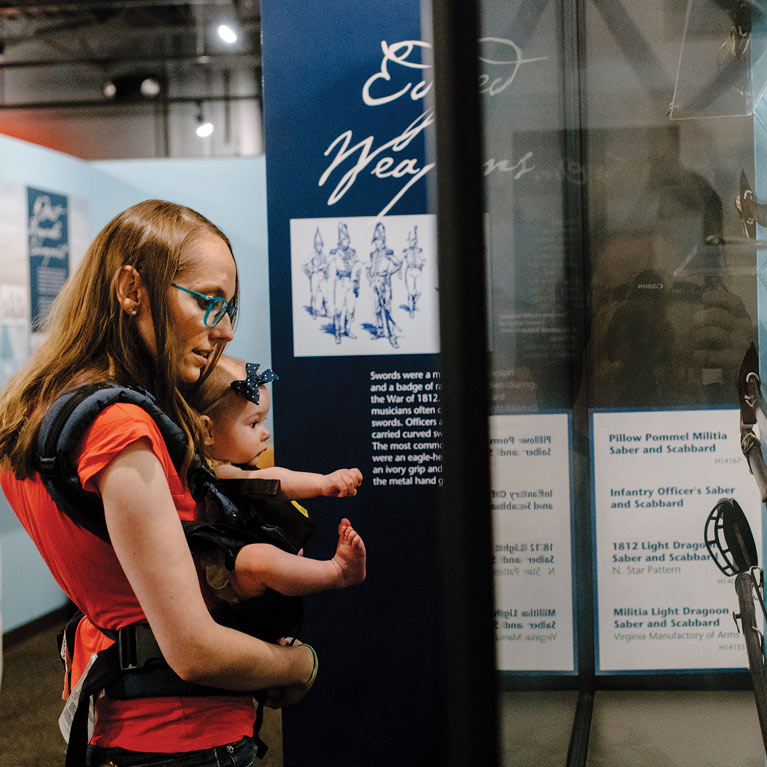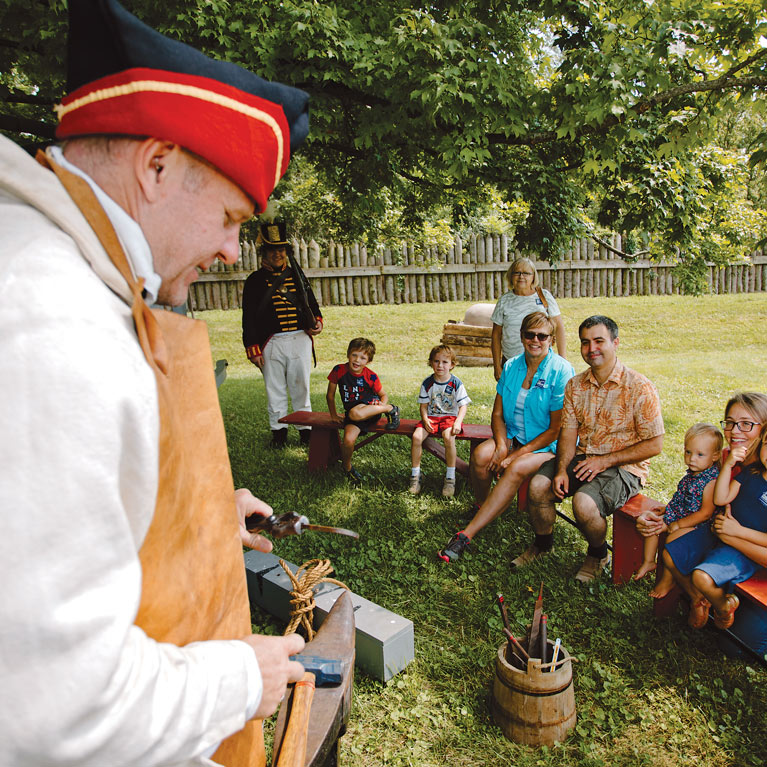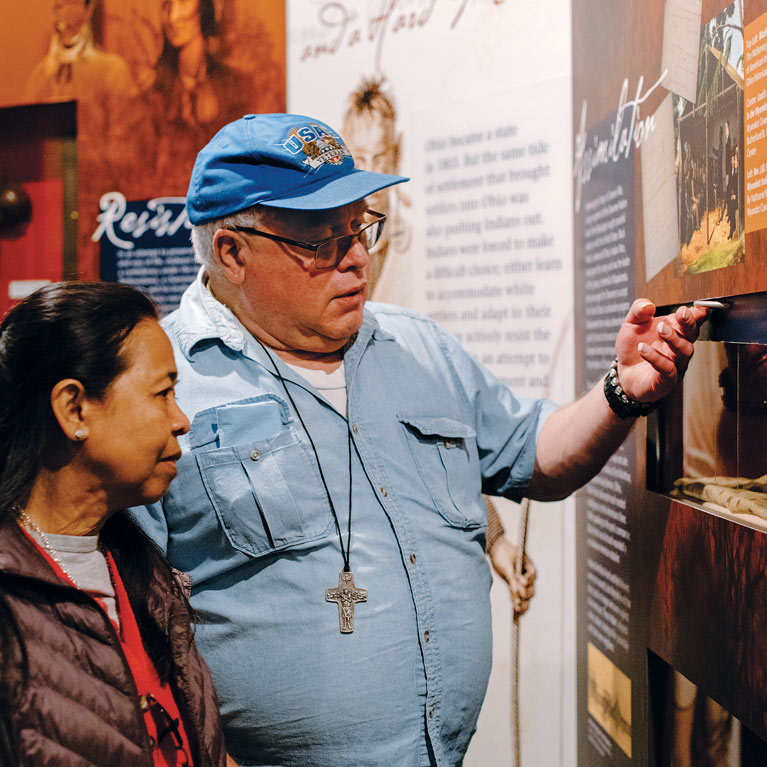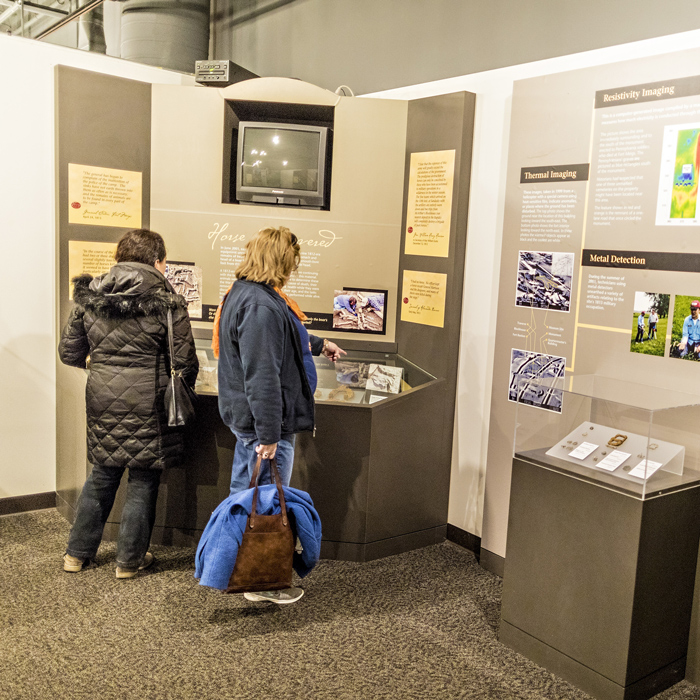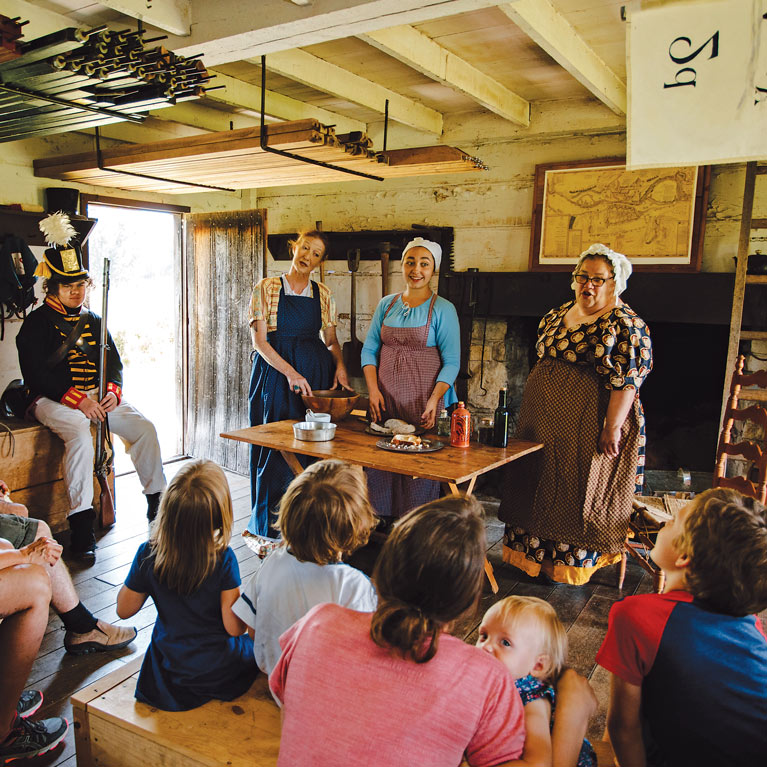Telling the Whole Story
One thing that’s apparent throughout Fort Meigs is the gravity of the
two sieges that took place there. In May of 1813, the British and Tribal
Nations that chose to ally with them engaged in their first attempt at
attacking Fort Meigs soon after its construction was complete.
“The strategy was to essentially surround Fort Meigs, cut it off, lay it
under siege, bombard it with artillery and basically force the Americans
to surrender and remove this threat,” Thompson says.
But after nine days of vicious fighting, including some brutal
hand-to-hand combat, the Americans make a stand to fend off the siege.
“Britain will decide that they can’t take this place, and they’re going
to pack up the show and sail [to Canada],” Thompson says. “What’s
significant about the first siege is that this is really the first true
victory that the United States sees in the war here in the West. Ohio is
really the last place left in the Great Lakes that’s still in U.S.
hands.”
A second siege in July 1813 was smaller and waged while the alliance
between the British and Tecumseh’s forces began to fracture. Staring
defeat in the face again, Gen. Proctor decides to go after a smaller
target, Fort Stephenson, which is three miles south of Fort Meigs.
But after trying an unsuccessful frontal assault there, many of the
Native American fighters left, dissatisfied with the British strategy.
“The significance of the second siege is the United States really stops
Britain’s last endeavor offensively, and it wrecks the alliance between
Britain and the Tribal Nations that allied with them,” Thompson says.

